As CBD becomes more widely used, it’s not surprising that people are getting creative with their hemp hobby. To our delight, we’re finding that a lot of our customers are buying CBD oil in order to create culinary masterpieces that are infused with the fascinating compounds native to hemp. This allows people to enjoy two hobbies at once – CBD, and the culinary arts.
If you’re feeling particularly adventurous in the kitchen, we suggest that you consider experimenting with CBD. Cooking with CBD can be a highly rewarding experience as it allows you to enjoy the powers of hemp while also trying out a new type of cuisine.
What to Know About Cooking with CBD
Before you get started, there are some things that you need to know. For better or worse, there’s a pretty strict science when it comes to cooking with CBD. But, luckily for you, we’re going to try to explain everything that you need to know in this simple guide below.
It Can’t Be Applied to Any Type of Food
First, you have to know that CBD oil can’t just be poured into any old recipe. CBD oil is considered a fat, because it’s oil-based. So, it can only be used in foods that require a certain amount of fat. For example, CBD oil does not blend well with water, so trying to make a batch of lemon ice pops with CBD oil is not going to work. However, foods that require an amount of fat can work well, such as cookies, salad dressings and meat marinades. Basically, you’re replacing a certain amount of fat with CBD oil when cooking with CBD.
Pure CBD Oil or CBD Oil Mixed with a Safe-to-Ingest Carrier Oil is Crucial
You also can’t just add any type of CBD product to a recipe. It’s important that it’s pure and safe to ingest. Pure CBD oil is the best as it contains nothing but hemp extract, although it’s okay to use CBD products that consist of hemp oil and a carrier oil that’s safe to consume, such as coconut oil, olive oil or hempseed oil.
Be Wary of the Temperature
CBD contains delicate chemical compounds that must be exposed to the right temperature in order to remain stable. Too much heat causes those compounds to break down and become basically useless due to a loss of potency. And, what’s the point of consuming CBD if its compounds are no longer capable of working?
As a rule of thumb, CBD oil should never be heated beyond 356 degrees Fahrenheit. Once it surpasses this temperature, it begins to lose potency at a rapid pace, making it basically useless. So, adjust your recipe if need be so that it stays below this temperature.
Go with Decarboxylated CBD
Decarboxylated CBD is CBD that has already had its compounds activated by way of heat exposure. This allows the CBD compounds to be quickly and thoroughly bioavailable. Cooking with CBD that hasn’t been decarboxylated is a lot like cooking with raw cannabis plant material. If it’s not heated to the right temperature, its compounds won’t really do anything. So, decarboxylated, in most cases, is the easier way to go as you don’t have to worry about reaching the right temperature in order for its compounds to become activated.
Find Recipes Online
If you’re just getting started, we suggest first looking for recipes online. This way, you’ll be able to follow someone else’s recipe that’s been proven to be successful, rather than having to play a guessing game. And, with CBD being as popular as it is, you’ll have no trouble finding a wide variety of exciting recipes to choose from.
Don’t Overcomplicate Things
In the beginning, keep things simple by making recipes that don’t require too much time, effort or ingredients. This way, you’ll be less likely to end up with a disaster. If you’re not an experienced cook or baker, try to go with something very basic like a CBD salad dressing, as this only requires a couple of ingredients.
Know How to Dose Your Food Properly
Next, know how to dose each portion properly by using basic math. Think about how many milligrams of CBD you wish to consume per portion, and then multiply that by the number of portions you plan to make. The number you end up with is how much CBD you should add to your recipe.
Only Make as Much as You’ll Realistically Consume Within a Few Days
Remember that food products break down fairly quickly, so don’t make more CBD-infused goodies than you can realistically eat in a matter of a couple of days.
Stick with Quality CBD, Always!
Lastly, always go for quality when it comes to CBD oil. The higher the quality, the better your experience will be, and the better the quality of the finished product will be. Cheap CBD is cheap for a reason, so always opt for the good stuff.
Cooking with CBD Can Be an Extremely Fulfilling Hobby…
And, may even turn into something lucrative down the road. Turning your CBD hobby into a culinary passion is a great way to express your creativity while doing your body good. But, before getting started, read this guide thoroughly in order to go about things in the right manner and end up with a product that satisfies those hemp-related needs.




